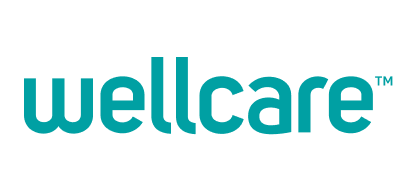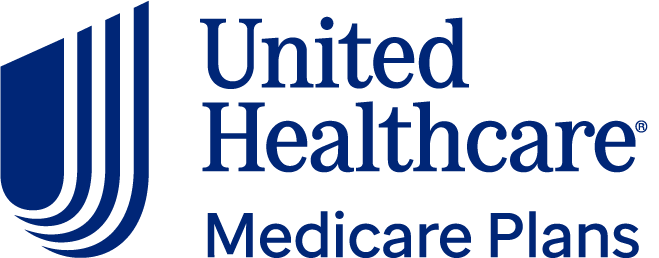Best Medicare Part D plans at a glance
Best for low average premiums: Wellcare.
Wellcare is a top pick for Medicare Part D plans in 2026, according to analysis from NerdWallet’s editorial team. It has the lowest average premiums and highest government quality ratings of any major provider.
Best for $0 premiums: Humana.
Humana is another top choice for affordable Medicare Part D plans. It offers $0-premium plans in more states than any other company and low out-of-pocket costs.
NerdWallet's editorial team analyzed plans covering nearly 90% of Medicare Part D members. We picked 2026’s best Medicare Part D plans based on cost, quality, member satisfaction and more. While Wellcare and Humana are NerdWallet’s top picks, UnitedHealthcare, Aetna and HealthSpring (formerly Cigna) get honorable mentions.
Why trust NerdWallet
45+ Medicare companies and brands analyzed by our team of experts.
30+ years of combined experience covering Medicare and personal finance.
Governed by NerdWallet's strict guidelines for editorial integrity.
NerdWallet’s Medicare content, including articles, reviews and recommendations, is produced by a team of writers and editors who specialize in Medicare. Their work has appeared in The Associated Press, Washington Post, Nasdaq, MSN, MarketWatch, Yahoo! Finance and other national and regional media outlets. They have been cited in publications including Healthline, and appeared on NerdWallet's "Smart Money" podcast.
Insurance company | CMS star rating | Out-of-pocket costs | Member experience | Learn more | |
|---|---|---|---|---|---|
BEST FOR LOW AVERAGE PREMIUMS | |||||
 (855) 432-0512 / TTY 711 M-F 9AM-9PM, Sat 10AM-6PM ETSpeak to a licensed insurance agent on askchapter.orgon NerdWallet | 3.50 | 3.50/5 | Varies | 3.5 (Above average) | (855) 432-0512 / TTY 711 M-F 9AM-9PM, Sat 10AM-6PM ETSpeak to a licensed insurance agent on askchapter.orgon NerdWallet |
BEST FOR $0 PREMIUMS | |||||
 (855) 432-0512 / TTY 711 M-F 9AM-9PM, Sat 10AM-6PM ETSpeak to a licensed insurance agent on askchapter.orgon NerdWallet | 3.00 | 3.00/5 | Lower than average | 3 (Average) | (855) 432-0512 / TTY 711 M-F 9AM-9PM, Sat 10AM-6PM ETSpeak to a licensed insurance agent on askchapter.orgon NerdWallet |
 (855) 432-0512 / TTY 711 M-F 9AM-9PM, Sat 10AM-6PM ETSpeak to a licensed insurance agent on http://askchapter.orgon NerdWallet | 3.00 | 3.00/5 | Higher than average | 1.5 (Below average) | (855) 432-0512 / TTY 711 M-F 9AM-9PM, Sat 10AM-6PM ETSpeak to a licensed insurance agent on http://askchapter.orgon NerdWallet |
 (855) 432-0512 / TTY 711 M-F 9AM-9PM, Sat 10AM-6PM ETSpeak to a licensed insurance agent on askchapter.orgon NerdWallet | 2.50 | 2.50/5 | Average | 2.68 (Average) | (855) 432-0512 / TTY 711 M-F 9AM-9PM, Sat 10AM-6PM ETSpeak to a licensed insurance agent on askchapter.orgon NerdWallet |
Best for low average premiums: Wellcare Medicare Part D

- Lowest premiums of any national competitor.
- Star ratings beat other national competitors.
- Coinsurance rather than copays for brand-name drugs could get pricey.
- High-end Wellcare Value Plus plan no longer available.
Why we picked it: Low premiums could be attractive to anyone, and both of Wellcare’s plans come with some of the lowest average premiums in the country. Wellcare Value Script might be a great fit for people on a fixed income or minding their budgets.
Wellcare stood out on measures of:
Quality improvement.
Rating of drug plan.
Price accuracy.
Medication adherence for hypertension and cholesterol.
The bottom line: Wellcare offers low-cost plans with solid quality ratings in 2026. Wellcare Value Script has $0 premiums in 17 states, and the average Wellcare plan premium is $8.16. Wellcare's government quality ratings beat every major national competitor.
Pros
- Lower average premiums than any other national competitor.
- Star ratings beat other national companies.
Cons
- Coinsurance for brand-name drugs could get pricey.
- No low-deductible plan.
Best for $0 premiums: Humana Medicare Part D

- $0-premium plans available in over half of states.
- Generous $0-copay and $0-deductible options.
- High prices for the higher-end Premier plan.
- Poor scores for accuracy of drug price estimates.
Why we picked it: Humana offers $0-premium plans in more states than any competitor. For some, the company’s Value Rx plan could be a sweet spot for affordable premiums and low out-of-pocket costs.
Humana stood out on measures of:
Few members choosing to leave.
Medication adherence for cholesterol.
Medication therapy management program completion rates.
The bottom line: Humana is expanding its $0-premium offerings to 27 states and Washington, D.C. in 2026. The Humana Value Rx plan has more drug tiers with $0 out-of-pocket costs than many competitors. But Humana’s member satisfaction has taken a dip, and it gets average quality ratings in 2026.
Pros
- $0-premium plans available in 27 states.
- Generous $0-copay and $0-deductible options.
Cons
- Pricey high-end Premier plan.
- Poor scores for accuracy of drug price estimates.
More Nerdy Perspective
Additional Medicare Part D companies
These companies aren’t our top picks this year, but they might be worth a look to see whether they’re a good fit.
Best for widespread availability: AARP Medicare Part D Plans from UnitedHealthcare

- Medicare Rx Preferred plan offers extensive coverage.
- Simplified plan choices.
- Average plan premiums are high compared to competitors.
- Below-average ratings for member satisfaction.
- Only the higher-end Preferred plan has $0-copay options.
AARP stood out on measures of:
Accurate price estimates.
Medication therapy management program completion rates.
The bottom line: UnitedHealthcare’s AARP Medicare Rx plans are widely available, and the company offers a high-end plan with a lower deductible than most. But UnitedHealthcare didn’t make it into NerdWallet’s top picks because it gets below-average quality ratings and low member satisfaction ratings from the Centers for Medicare and Medicaid Services (CMS).
Pros
- Plans are available in all 50 states, Washington, D.C. and five U.S. territories.
- Simplified plan choices.
Cons
- Premiums are pricey compared to similar plans.
- Below-average ratings for member satisfaction.
- Only the higher-end Preferred plan has $0-copay options.
Best pharmacy network: Aetna SilverScript Medicare Part D Plans

- Simplified pharmacy network with uniform out-of-pocket costs.
- Just one plan choice.
- No $0-deductible options.
- Below-average ratings for member satisfaction.
Aetna stood out on measures of:
Quality improvement.
Few members choosing to leave.
The bottom line: Aetna SilverScript plans offer a simplified pharmacy network with the same out-of-pocket costs at all in-network pharmacies, and Aetna’s quality ratings are decent. But Aetna Part D plans fall short in two areas: Member satisfaction is low, and premiums aren’t the most affordable.
Pros
- Simplified pharmacy network.
Cons
- No $0-deductible formulary tiers.
- Low member satisfaction.
Best for generics: HealthSpring (formerly Cigna) Medicare Part D

- $0-premium plans are available in 11 states.
- High-end plan has $0-deductible and $0-copay options.
- Star ratings are below average.
- Premiums generally aren't competitive.
HealthSpring stood out on measures of:
Accurate price estimates.
Medication therapy management program completion rates.
The bottom line: Cigna plans will be renamed as HealthSpring plans in 2026 because Cigna sold its Medicare business. HealthSpring (formerly Cigna) Medicare Part D plans don’t offer the cheapest premiums, and they get below-average quality ratings in 2026. But the company does offer $0 premiums in select states. Members who take generic medications may want to consider the Extra Rx plan, which has a $0-deductible and low or no copay on generics.
Pros
- $0-premium plans available in 11 states.
- $0 deductible on Tier 1 and 2 drugs with the Extra Rx plan.
Cons
- Star ratings are below average.
- No low-cost plan available in 2026.
What’s the best way to compare Part D plans?
Medicare Part D plans are sold by private insurance companies. Plans' costs, benefits and other features can vary significantly.
First, confirm whether a plan covers your prescription drugs. Then consider each potential plan option’s strengths and weaknesses.
NerdWallet compares and chooses the best Medicare Part D plans based on factors including:
Quality ratings from CMS.
Prices.
Out-of-pocket costs.
Formulary design.
The best plans offer lower costs and higher ratings for quality and member satisfaction.
How to find the right Medicare Part D prescription drug plan
Here are some tips to help you choose the best Medicare prescription drug plan for your needs:
Check the formulary: Make sure the medicines you currently take are covered. Talk to your health care providers about what medications to look for. You might also also want to check for possible alternatives and/or drugs you think you might need in the future.
Look for plan changes: Formularies (lists of covered drugs) change frequently. Your insurer should send you a Notice of Plan Change when the formulary changes. Read that document carefully.
Check the pharmacy network: Most Medicare Part D plans have networks of lower-cost pharmacies. Check to see if the plan's pharmacies are convenient for you. Also, compare prices for using mail order.
Use the Medicare plan finder tool: The interactive tool on Medicare.gov can help you find a Medicare Part D plan that covers your prescriptions. It also helps you compare costs among Medicare Part D and Medicare Advantage plans available to you.
You can switch plans during Medicare's open enrollment period, Oct. 15 to Dec. 7. Changes go into effect on the following Jan. 1.
» MORE: How much does Medicare Part D cost
You may be eligible for Medicare plans during a special enrollment period if you are turning 65, new to Medicare plans, moving or losing coverage.
If you have additional questions about Medicare, visit Medicare.gov or call 800-MEDICARE (800-633-4227, TTY 877-486-2048).
Article sources
NerdWallet writers are subject matter authorities who use primary, trustworthy sources to inform their work, including peer-reviewed studies, government websites, academic research and interviews with industry experts. All content is fact-checked for accuracy, timeliness and relevance. You can learn more about NerdWallet's high standards for journalism by reading our editorial guidelines.
- 1.NerdWallet analysis of CMS data. 2026 Star Ratings Data Tables. Accessed Oct 14, 2025.
Medicare Part D plan review methodology
NerdWallet’s Medicare Part D reviews are based on:
Ratings data from CMS.
Pricing.
Out-of-pocket costs.
Formulary tiers.
Member experience.
NerdWallet's editorial team reviewed five Medicare Part D insurance companies. We chose companies based on high enrollment and online search volume. Together, these companies cover over 89% of stand-alone commercial Medicare Part D beneficiaries.
These reviews are a guide. We encourage you to shop around and compare several plans.
NerdWallet does not receive compensation for any reviews. Read our editorial guidelines for more information.

